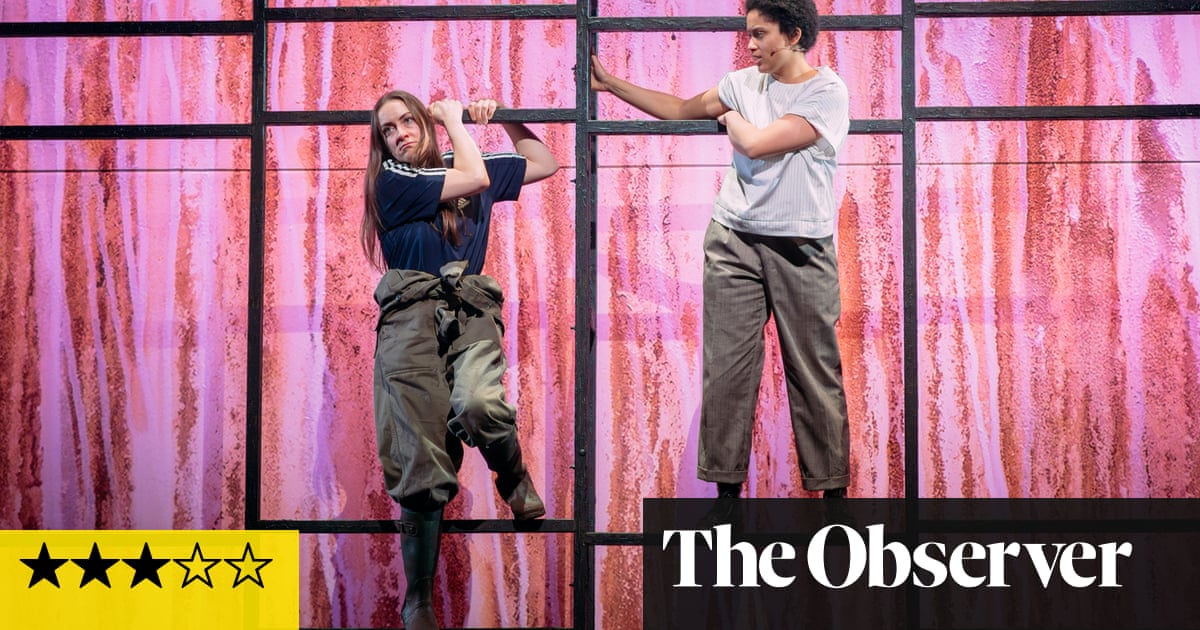In front of a backdrop suggesting a sunset-streaked sky is set a square of bare brown earth. Loose soil is sectioned into four rows by wooden beams that hold it in shape as actors move on to and across it, dig into it and dance over it. The image suggests both ploughed field and graveyard (Emma Bailey’s design and Emma Jones’s lighting).
The impression of human transience in enduring nature is heightened by Finn den Hertog’s direction of Sunset Song: actor-musicians, seated to either side of this site, transit across it as characters, ghosts or imaginings. Cycles of nature are evoked by Vicki Manderson’s choreography: a chorus collectively repeating structured movements that suggest gestures of sowing or harvesting (elsewhere, movement is not so impressive).
In its visual presentation, then, Den Hertog’s staging captures something of life in north-east Scotland as it was drawn by Lewis Grassic Gibbon in his 1932 novel (published three years before his death at the age of 33). In other respects, both the production and Morna Young’s new adaptation are less satisfying.
Gibbon’s story examines, in heightened, rhythmic, idiomatic prose, the changing identity of the fictional parish of Kinraddie from 1911 to 1919. It is presented, mainly, via the thoughts and experiences of Chris (Danielle Jam) as she grows from girl to woman on a small croft. Here, the focus is more tightly on Chris and her dilemmas: to stay on the land, marry and continue to speak Scots; or to escape, through education, and become an anglified teacher. For all the liveliness of the eight performers and the richness of Young’s Scots-language text, there’s a too frequent settling for melodramatic cliche at the expense of dramatic development that results in characters and relationships feeling incomplete (including scenes showing how Chris’s choices are affected by sexual violence).
Finn Anderson’s music (percussion, electric guitars, keyboard, flute and violin) creates effective tonal atmospherics but is misused to overlay emotional resonances that should more properly be generated by the action (erratic sound balance, on the night I was there, meant it also, at times, out-volumed the dialogue). The production needs to dig deeper than modish ideas to uncover the heart of Gibbon’s very human drama.
after newsletter promotion
